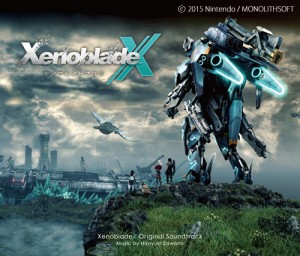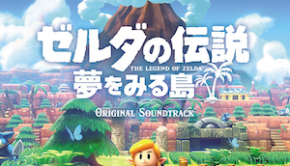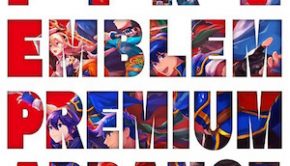Xenoblade Chronicles X Original Soundtrack
 |
Album Title: Xenoblade Chronicles X Original Soundtrack |
| Record Label: DefSTAR RECORDS |
|
| Catalog No.: DFCL-2135/8 |
|
| Release Date: May 20, 2015 |
|
| Purchase: Buy at CDJapan |
Overview
The much-anticipated sequel to Xenoblade Chronicles came with a much-anticipated soundtrack, although not without some major changes. Newcomer to the Xeno universe Hiroyuki Sawano took the reins from ACE+, Yoko Shimomura, Manami Kyota, and Yasunori Mitsuda and created his own massive score to the game, which in itself is drastically modified thematically from its predecessor. Sawano, currently well known for his extensive work on the Attack on Titan anime and movies, took a heavily electronic approach to the score and varied the tracks as much as possible, perhaps working to emulate the feel of multiple composers working on the same score as in Xenoblade. This approach came with both benefits and drawbacks in his behemoth of a final product, which spans an impressive four and a half hours in length.
Body
Whatever shortcomings this score contains, they are not present in the opening track. “Codename Z” is a fantastic way to start the sequel score to Xenoblade, and Sawano does not hold back in letting listeners know what kind of statement he’s going to make in terms of the album’s energy. The track is packed full with electric guitar, percussion, crazy chorals, and the end result is extremely exhilarating. The piece feels authentic, and maintains a direction throughout its duration; if we’re modernizing the sound of Xenoblade, this is the way to do it. This sort of breathless, adrenaline-packed mixed-instrument style is not limited to the opening. “Requiem” starts so quietly that I wasn’t even sure I had the volume turned up properly when I first heard it. The direction of the piece is murky at first, but about halfway through it picks up with a slight increase in volume and rhythm with more lines of music. Eventually it morphs into a sort of chorale-turned-electronica track before finally ending with a string orchestra / electronica piece alongside some strange synth percussion. The resulting piece is great to just sit back with and take in.
The electronics-and-strings feel really works . It’s kind of atmospheric, but Sawano does a wonderful job of taking the score in a new direction without completely losing an identity. I really love the way that the instruments counter each other, and the melody is nice. “RAOKIMERATERESIA” is another such track, beginning with a low bass electronic sound in the “buzzing” octave, and quickly rising to a striking rock-choral piece. I loved this piece: it is extremely straightforward and maintains a constant heavy rhythm throughout. Halfway through, the piece fades off until even the buzzing bass is gone. This would be the place that most pieces loop, but instead the percussion changes rhythm, although not dynamic, and the strings become more agitated and lighter. “Boukyaku Keikoku” takes a more feverish approach; not only is the percussion faster and more complex, but the melody (which is otherwise a simple scalar descent) is completely dotted and consequently off-beat – and insanely catchy.
For the main theme of the soundtrack, Sawano uses three notes spread across nearly the entirety of the score, skillfully rearranging, inverting, and varying the sequence into a multitude of styles. “Theme X” is an exuberant rock-and-strings track setting the theme in a dotted note pattern with a counter-melody in the brass and intermittent intervals of electric guitar riffs. “Re:Arr X” takes the same theme and sets it against a more orchestral backdrop. It’s far more peaceful than many of the other tracks in the score, although only relatively so. However, the theme appears in other forms. “Mono X” is a more acoustic version of the theme, and drops some of the rock air in favor of a more finite and resolute electronic symphonia sound. “Ares Boss” takes the same theme and plays it in delicate high strings against a heavier bass; there is relatively little instrumentation in the middle octaves, which gives the piece a very open feel, especially after some rolls of dissonant piano make their way into the second half of the piece. “The Way,” one of the many lyrical songs on the album, incorporates the theme beautifully as an instrumental countermelody to the vocalist’s part. The resulting song is gorgeous and feels very authentic, and feels less concerned with following a certain genre than with simply getting a thorough, rounded musical idea completely written out.
A success point of Sawano’s score is that there is something in it for just about any listener. It’s hard to critique a certain style when there really is no one style that he sticks with. My favorite style involved the moments in which Sawano incorporated veins of more acoustic instruments – moments which I found to be extraordinarily successful in this soundtrack. “NLAShuuhen” features exhilarating, harmonic minor scale gives it a Middle Eastern vibe, and the percussion is absent for enough moments in the piece to give the violin breathing room. Interestingly, the percussion is on a different rhythm than the soli strings, so that while it sounds natural during a quick listen, upon closer inspection, they’re not quite together in several points throughout the piece. It makes for a fascinating listen. “Manon” is a similar piece; while I don’t enjoy it as much as “NLA Shuuhen,” it has the same Middle Eastern flavor in both its instrumentation and its key and scale of choice. It also has a sort of octaval, ambient electronic background sounds that actually enhance the cartoonish melody that eventually emerges. The melody features in several locations throughout the score, and is the closest I can find to a throwback to one of the melodies of the original Xenoblade Chronicles soundtrack, the Colony 6 theme. In the midst of everything new in Xenoblade Chronicles X, the good and the bad, I was very happy to find something hinting, albeit delicately, at such a familiar Xenoblade melody line.
“Shinpiteki” is a surprising discovery in the score. Even though it’s not devoid of electronics, it’s primarily a choral piece, and despite occasional unfamiliar dissonant chord — or because of the occasional unfamiliar dissonant chord — is hypnotizingly tranquil and hauntingly beautiful. Like many of the tracks on the album, it fades away to silence before returning past the halfway point in a new form, through gentle acoustic guitar, so soft it’s hard to even tell if it’s really there. The whole effect feels like a nocturne, some evening or night piece with bright, hopeful affect. The vocals return with a new relatable melody, and the electronics return with barely more force, and the piece ends with the quiet energy of morning. The following track, “Shiro no Tairiku,” eases itself into the next slot of the album through a gentle flute and light pitched percussion delicately playing one of the melodic threads of Xenoblade. I particularly enjoyed these two tracks together because after the wild energy of the album so far, the sweetness of the more gentle tracks had an even more powerful effect than they might have had otherwise.
As successful as the combination of techniques is in some tracks, it falls short in others. “Black Tar” is one such track. While it has some fantastic rock-oriented instrumental portions and the concept of the vocal style seems to have potential, unfortunately, the piece doesn’t work in practice. This is arguably because of the quality of the vocals or the lyrics themselves — the latter is at the very least a major factor. Had the song been in some other language (as Sawano seems to enjoy writing in German as well as English), I might have enjoyed it more, but the lyrics get awkwardly juvenile at times. While the problem is not limited to “Black Tar,” the rap-inspired style gives the lyrics a little too much prominence for my taste, particularly given the content of the lyrics (which range from “hashtag dark-and-possessed” to “I’m gonna need a bigger gun”). “NLA Shigai” was another vocal piece that didn’t work for me. It’s a riff of an 80s track mixed with R&B, and the genre just felt too unstable for me to get really comfortable listening to the piece. “By My Side,” on the other hand, is a much more stylistically straightforward, but this time Sawano seemed to sacrifice originality in its creation. The lyrics seem to have the same struggle that they did in “Black Tar” (“If you wanna leave me I’ll be dead / If you wanna need me I’ll be there”), but the musical aspect is less mysterious (or confusing, as the case may be). He skips ahead a decade, delivering a 90s-style rhythm and vocal affect, but I had the same response to this one that I did, in many ways, to “NLA Shigai”; if these are enjoyable styles for the listener, these are passable examples, if bland. If not, then there is really nothing in these tracks to gain.
The problem with XenobladeX is that it sometimes comes across as cheap, like music to a film trailer, and Sawano’s mission to dissolve all barriers separating musical genres clashes with the fundamental mission of any soundtrack: to create a musical identity for the game. After listening to the soundtrack several times over, I can’t quite point to any one sound that is individual to the game. Certainly the soundtrack has enjoyable moments, and several relatively themes give the album reference points, but all in the same style that a mixed playlist can be both themed and enjoyable on a long road trip. Is it fun? Sure! Is it dynamic? Unquestionably. Is it cohesive? Not at all. The bizarre naming practices epitomize this issue of identity; even the tracks I loved on the album had me going back several times to find the name and copy it down so that I would remember the exact sequence of numbers used when I wrote about it, or even when I just wanted to go back and listen to a favorite track for fun, which detracted significantly from the listening experience.
One aspect of the score that I appreciated was Sawano’s aversion to loops in game tracks. After listening to a six+ minute track, I never get the feeling that I’ve listened to the same thirty seconds over and over. “CR17S19S8,” which would be a giant piece at 5:58 in any other score, meets an average length in Xenoblade Chronicles X, but evolves and grows dramatically. The piece brings in electronics, heavy percussion of all types, chorals, a solo female vocalist, and wild strings, at chosen, seemingly random intervals, so by the end I have to check to make sure I’m listening to the same piece. “Z39B Comical” is extremely different stylistically, but follows the same random, baffling — but aesthetically fun — pattern, pulling in threads of zydeco, country, funk, classical, Caribbean. The piece functions great as two separate pieces mashed together. It ends with a kind of soothing, casual, acoustic guitar and piano and smooth percussion vibe, all very mildly out of tune – which I thoroughly enjoyed.
The fourth disc of Xenoblade Chronicles X seems to be a collection of arrangements and remixes of tracks from earlier on in the score. I like the idea of this inclusion, but I also wish that these pieces had been scattered around the score to even out the sound of the overall soundtrack. For the most part, they lean towards the mellow, often acoustic versions of much heavier tracks, but it’s a shame that they’re all grouped together at the very end, as a sort of afterthought, instead of scattered throughout the score — perhaps after their respective tracks. Included in the mix are a few piano collections that, despite being so far towards the end of the score, are welcome breaks in the high intensity album. “Piano X1” is my favorite of the three tracks, featuring a tangible arrangement of the main theme. It’s not particularly groundbreaking, but it’s gentle, and a nice overall piece. “Piano X2” is perhaps my least favorite, coming across as a half-hearted and hastily thrown-together arrangement of one of the several themes of Xenoblade Chronicles X. “Piano X3” is interestingly set to much stronger volume than its predecessors, which I appreciated, and is much less aimless than the second piano track. I appreciated this arrangement almost as much as the first one — it was a rippling, acoustic piece in a mass of hard electronic and choral rock tracks. My only complaint is that, again, tacking it onto the end of the album throws off the balance in a score that could really have used some more mellow tracks earlier one.
Out of the several strong vocal tracks in Xenoblade, “So nah, so fern” was one that stood out not for its quality — although it’s by no means lacking — but for its beautiful instrumental arrangement in the fourth disc of the album. The original song, “So nah, so fern,” has some gorgeous, constantly shifting background instrumental lines, beautiful, swirling background instrumentals, and wonderful vocal consistency. While it certainly falls under the pop rock genre, it’s not jarringly so — not in the way that many of the other vocal tracks seem to be yanking the listener into some random genre — but it fits with the rest of the album. In the fourth disc, the piece returns in an instrumental arrangement, X-BT3. I loved this track. The melody line, played on a violin, is so smooth, dark, and rich that within the first thirty seconds of the track I knew it was going to be one of my favorites. The violin stays on the low strings (which makes me wonder if viola might have been the better option here, providing a slightly fuller sound in the range that is just more natural for the larger instrument). In any case, the molasses-y sound provided by the violin is very different from many of the other tracks on the score – but like its predecessor, it works extraordinarily well.
Summary
All in all, Sawano has a very solid score to a game in a series that already boasts a fearsome musical reputation. Sawano puts his effort into originality and diversity of sound, and it pays off. The massive playlist of the XenobladeX score is varied and extremely different from the usual score — sometimes to a fault. There is no question that this score has plenty of enjoyable moments, despite its low points, and in fact overall this is a score that I am going to want to return to over and over again during the course of the next several months. Sawano has embedded a lot to be discovered with the music of Xenoblade Chronicles X. There are certainly pitfalls in the score, to be sure, but I also truly believe that there is a track in this score for fans of almost any genre — even if it takes some sifting and translating to find it.
Do you agree with the review and score? Let us know in the comments below!
4
Posted on June 10, 2015 by Emily McMillan. Last modified on June 11, 2015.














